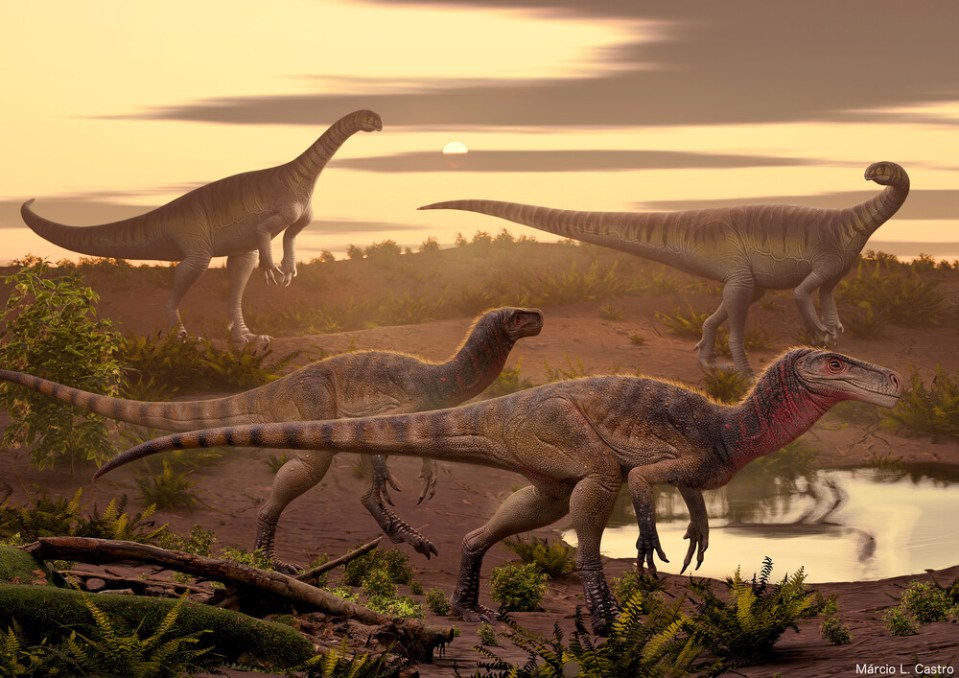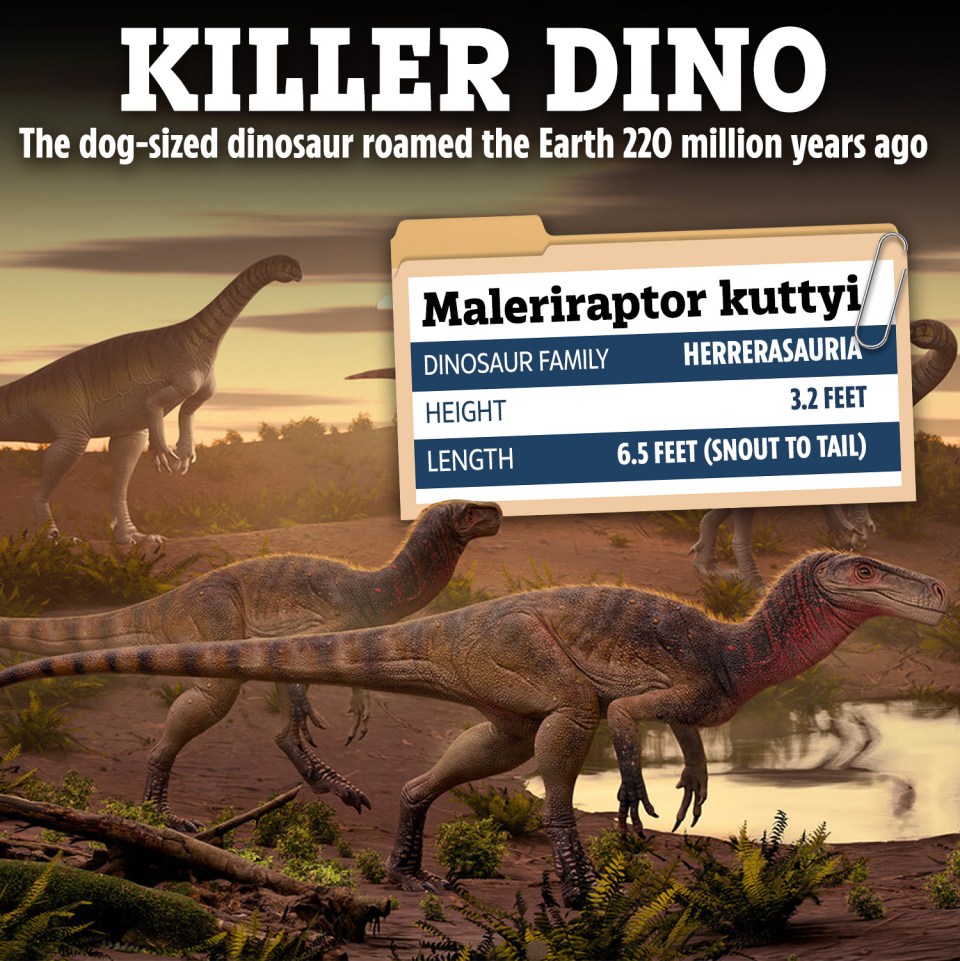A NEW dog-sized dinosaur species that roamed the Earth 220 million years ago has been discovered.
The Maleriraptor kuttyi is thought to be one of the earliest killer dinosaurs in history.
The now-extinct dinosaur is believed to have lived some 220 million years ago – during the Triassic period.
The small but mighty beast could grow to a height of 3.2 feet and a length of 6.5 feet – about the size of a large-breed dog such as a Great Dane.
And the creature was one of the earliest known carnivorous dinosaurs, along with the rest of the Herrerasauria family.
Dr. Martín Ezcurra from the Argentina’s Natural Science museum said: “Herrerasaurs represent the oldest radiation of predatory dinosaurs.”
The fossilised dinosaur bones were discovered more than in Telangana, India forty years ago.
But only now have scientists identified exactly what species these bones belonged to.
Herrerasauria fossils were previously found in South and North America.
But the new bombshell discovery has proved that the creatures roamed far more of the Earth than previously thought.
And the dinosaurs in India are believed to have outlived those elsewhere.
Scientists believe this might be because India had a similar climate to South America during the Triassic period.
This comes after a giant horned dinosaur species was unearthed in Egypt.
The predatory dinosaur species, named Tameryraptor markgrafi, was originally discovered in 1914 by Ernst Stromer von Reichenbach who died in 1952.
The 95million-year-old skeleton was excavated in the Bahariya Oasis in Egypt before it was stored in the Bavarian State Collection for Paleontology and Geology in Munich, Germany.
But the remains were destroyed along with other Egyptian discoveries when Munich was bombed in World War Two.
Tragically the only remnants of the dinosaur discovery were Dr Stromer’s notes, illustrations of the bones and black and white photographs of the skeletons.
But Dr Stromer’s records have now been reanalysed in a new study.
Maximilian Kellermann, the study’s first author said: “What we saw in the historical images surprised us all.
“The Egyptian dinosaur fossil depicted there differs significantly from more recent Carcharodontosaurus found in Morocco.”

